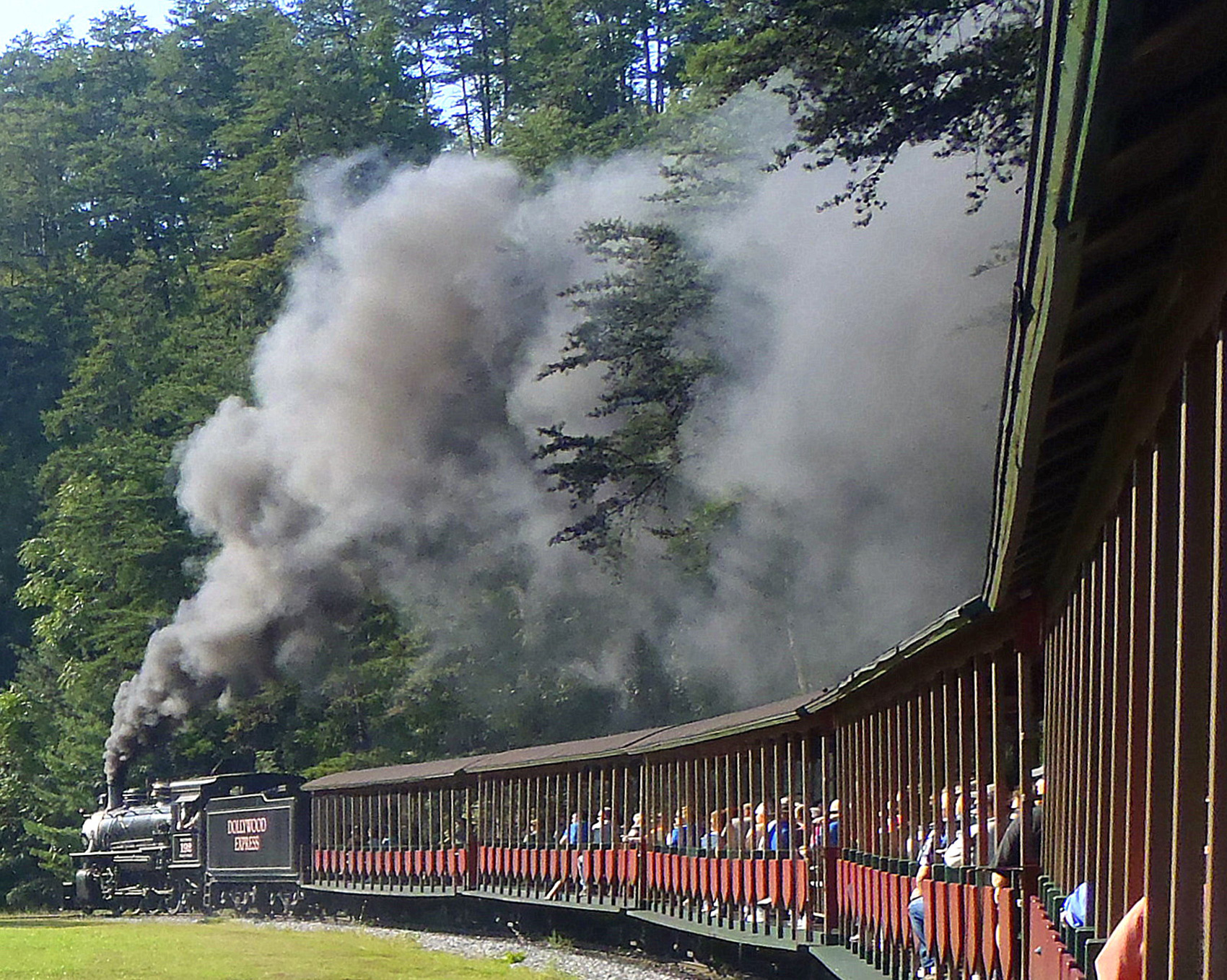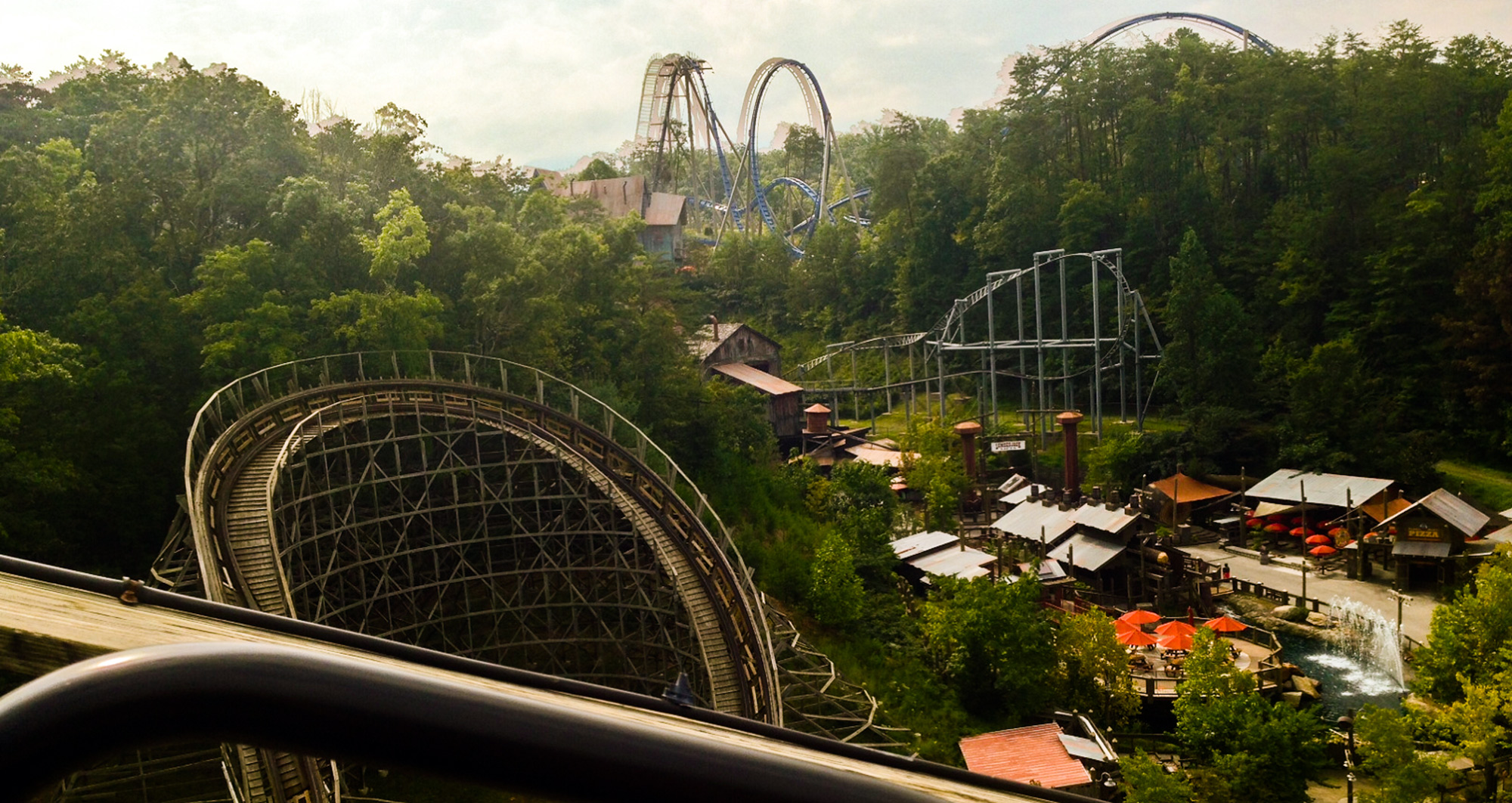In February, Dolly Parton presented the librarian of Congress, Carla Hayden, with the 100,000,000th book from Parton’s Imagination Library. Founded in 1995, the Imagination Library focuses on literacy and each month sends books to pre-kindergarten children to “inspire them to dream.”
One of 12 children, Dolly Parton grew up in a one-room cabin in Locust Ridge, Tennessee. Motivated by the illiteracy of her sharecropper father, she always credited reading as the force that inspired her own dreams and success. Her generosity of spirit is what led her to found her book-giveaway project, and that same spirit permeates Dollywood, the Smoky Mountain theme park she created in Pigeon Forge, Tennessee. Graham Hoppe’s intention in Gone Dollywood is to describe how the theme park is a manifestation of Parton’s embracing personality.
Parton views her life as an example of dream fulfillment. She describes herself as having been a “show-off” from her earliest years. As a child, she learned to play guitar and sang on a local radio program. After graduating from high school, she moved to Nashville, where country music star Porter Wagoner quickly made her a regular on his weekly show. Parton sang with Wagoner from 1967 to 1974 before striking out on her own and wrote one of her most famous songs, “I Will Always Love You,” as a tribute to Wagoner’s mentorship.
She emerged as a major country music and crossover star in the 1980s, appearing in such hit films as 9 to 5 (1980), The Best Little Whorehouse in Texas (1982), and Steel Magnolias (1989).
In the midst of her flourishing career, Parton began working on Dollywood in 1986, rebranding an existing park and greatly expanding it. Today it sprawls over 150 acres and is the biggest tourist attraction in Tennessee, drawing more than 3 million visitors annually. It’s meant to be a place, as its website puts it, for families to “disconnect from the world’s distractions and reconnect with each other.” In this, Dollywood is more in the tradition of historical American amusement parks than the kind of mega theme-park “spectacles” begun with the creation of Disneyland in 1955.
Dollywood is intended for family entertainment, much like the “pleasure gardens” of the 19th century—recreational amusement parks that featured bandstands, zoos, and circuses for people to enjoy as they picnicked in the fresh air. From 1895 on, Coney Island exemplified this kind of amusement park; it was, wrote historian John F. Kasson in Amusing the Million (1978), “a harbinger of the new mass culture.”
It was American mass culture—and specifically Dolly Parton’s celebrity—that made Dollywood possible. But it would be wrong to think of it as simply a shrine to her fame, like Graceland is to Elvis Presley’s. Rather, Dollywood is, Hoppe writes, “Parton’s imagined idea of the Smoky Mountains” that shaped her life—an attempt to present Appalachian life in a relentlessly positive light. Parton has filled the theme park with “legacy” landmarks that aim to inspire: There is a replica of her childhood home, stores selling hillbilly crafts and knicknacks, a museum of southern gospel music, a “Dollywood Express” steam engine that roars through the park, eight roller coasters, and many other rides.

Hoppe argues that Dollywood is “a corrective for the stereotypes that have annoyed the population in Appalachia for more than a century.” One of Parton’s priorities is to showcase “hillbillies” as “a very proud people . . . people with class,” as she put it in a 1977 interview. It is a view contrary to the characterization J.D. Vance offers in Hillbilly Elegy, in which he depicts hillbilly life as full of despair and “learned helplessness” (which he escaped by heading to college and law school).
Instead of despair, Parton has infused Dollywood with the inspiration she found in Smoky Mountain life and culture. Hoppe stresses that Dollywood gives everyone “a chance to experience someone else’s dreams.”
Gone Dollywood is an odd mix: It lacks the detail of Michael Fridgen’s Fodor-esque guidebook Dollywood and Beyond! and never cultivates the rigorous cultural considerations of Helen Morales’s Pilgrimage to Dollywood (2014). Trained as a classicist, Morales draws a fascinating distinction between the visitors who come to Dollywood as a “pilgrimage” because of their affection for Parton and those who come to enjoy it chiefly as an amusement park.
Hoppe’s training as a folklorist leads him to speculate in interesting ways about how Parton’s celebrity image has infused her theme park. But the short book is also cluttered with oddball chapters like “Okra, Chicken Livers, and a Break for Dinner.” (When he singled out the local Cracker Barrel restaurant for evoking “the same sense of nostalgia” he felt throughout Dollywood, this reviewer was instantly inspired to hum a chorus of “Sing for Your Supper.”)
At one point, Hoppe remarks on his surprise at the authenticity of the place: “Wherever I looked for irony at Dollywood, I was disappointed. There was no distance, no room for detachment. No hillbillies were winking from behind a moonshine jug or from beneath threadbare straw hats.” He finds the genuineness a reflection of Parton herself: “I may look fake,” she once said, “but where it counts I’m real.” Although Parton “graciously declined” to be interviewed for the book, Hoppe is fine with that, writing that via her songs, movies, and theme park she is her own “master storyteller.” Parton’s iron grip on her image fits Hoppe’s concluding thought about Dollywood: “The whole place is a performance.”
Hoppe’s profile of the park is a quirky contribution to the lore and legend of Parton. But the book’s chief function is to whet the appetite for more. Dolly Parton is a performer, entrepreneur, philanthropist, and major cultural icon. How is it that she has not yet been the subject of a full-scale biography?


